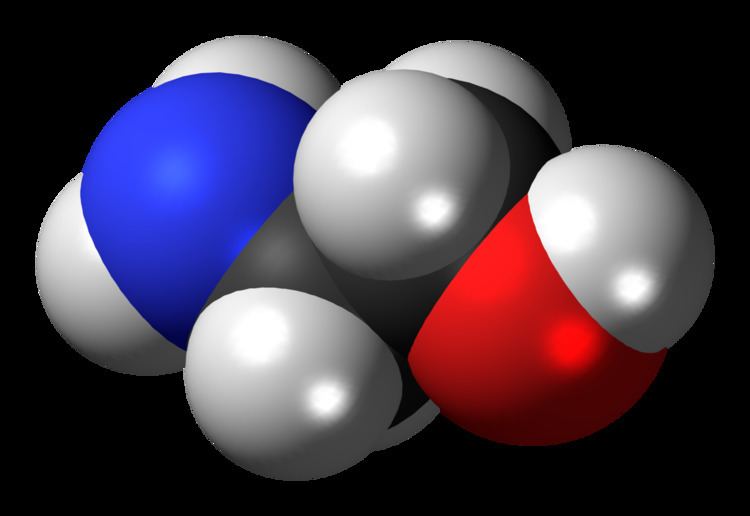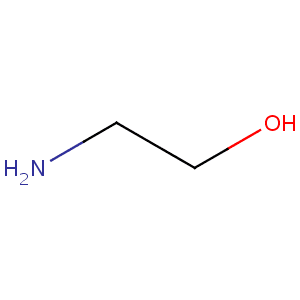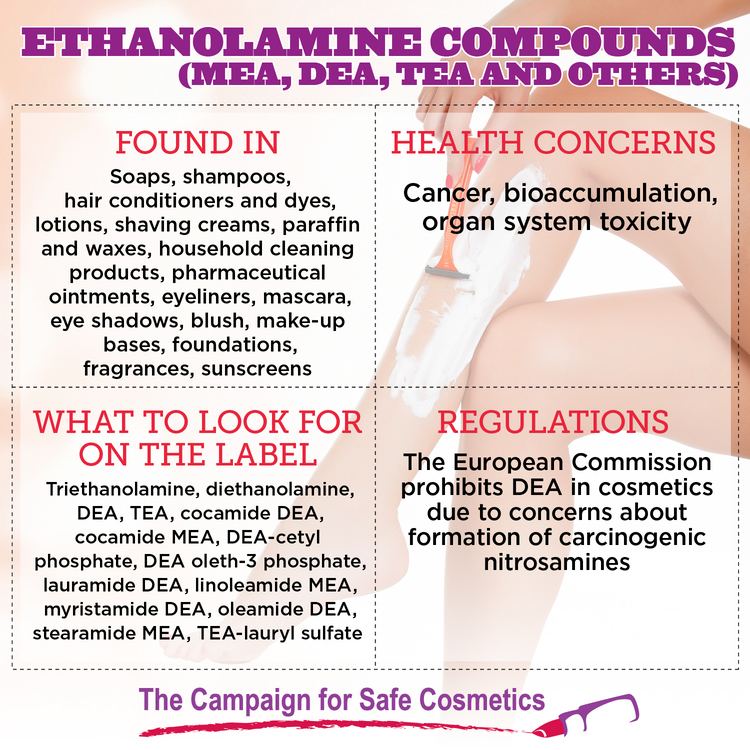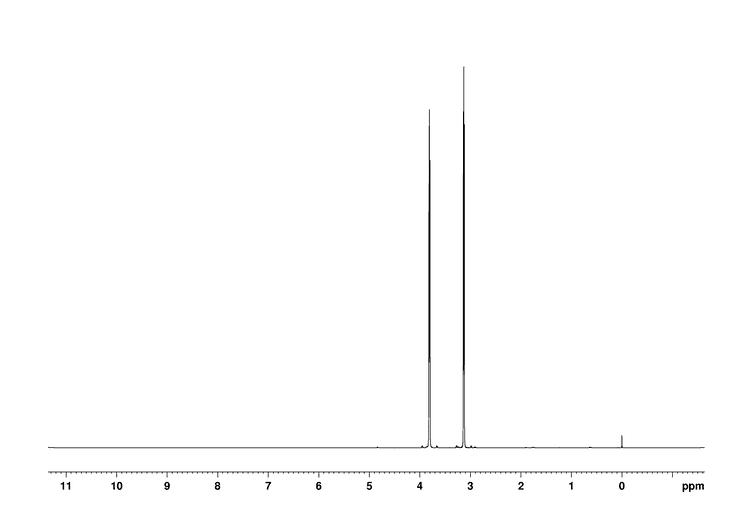Formula C2H7NO Molar mass 61.08 g/mol IUPAC ID 2-Aminoethanol | Density 1.01 g/cm³ Boiling point 170 °C Melting point 10.3 °C | |
 | ||
Related compounds Classification Volatile organic compound, Amino alcohol | ||
Ethanolamine, also called 2-aminoethanol or monoethanolamine (often abbreviated as ETA or MEA), is an organic chemical compound with the formula HOCH2CH2NH2. The molecule is both a primary amine and a primary alcohol (due to a hydroxyl group). Ethanolamine is a colorless, viscous liquid with an odor reminiscent to that of ammonia. Its derivatives are widespread in nature, e.g., lipids.
Contents
- Industrial production
- Biochemistry
- Applications
- Gas stream scrubbing
- Other uses
- pH control amine
- References

The ethanolamines comprise a group of amino alcohols. A class of antihistamines is identified as ethanolamines, which includes carbinoxamine, clemastine, dimenhydrinate, diphenhydramine, and doxylamine.

Industrial production

Monoethanolamine is produced by reacting ethylene oxide with aqueous ammonia; the reaction also produces diethanolamine and triethanolamine. The ratio of the products can be controlled by changing the stoichiometry of the reactants.
Note that this reaction is exothermic and that controls are needed to prevent a runaway reaction.
Biochemistry
Ethanolamine is biosynthesized by decarboxylation of serine:
HOCH2CH(CO2H)NH2 → HOCH2CH2NH2 + CO2
Ethanolamine is the second-most-abundant head group for phospholipids, substances found in biological membranes (particularly those of prokaryotes), e.g., phosphatidylethanolamine. It is also used in messenger molecules such as palmitoylethanolamide, which has an effect on CB1 receptors.
Applications

Ethanolamine is commonly called monoethanolamine or MEA in order to be distinguished from diethanolamine (DEA) and triethanolamine (TEA). It is used as feedstock in the production of detergents, emulsifiers, polishes, pharmaceuticals, corrosion inhibitors, chemical intermediates.
Gas stream scrubbing

Like other amines, monoethanolamine is a weak base and this property is exploited in its use in gas scrubbing.

Aqueous solutions of MEA (solutions of MEA in water) are used as a gas stream scrubbing liquid in amine treaters. For example, aqueous MEA is used to remove carbon dioxide (CO2) and H2S from various gas streams, e.g., flue gas and sour natural gas. The MEA reacts with acidic compounds dissolved in the solution, turning the molecules into an ionic form, making them polar and considerably more soluble in a cold MEA solution, and thus keeping such acidic gases dissolved in this gas-scrubbing solution. Therefore, large surface area contact with such a cold scrubbing solution in a scrubber unit can selectively remove such acidic components as hydrogen sulfide (H2S) and CO2 from some mixed gas streams. For example, basic solutions such as aqueous MEA or aqueous potassium carbonate can neutralize H2S into hydrosulfide ion (HS−) or CO2 into bicarbonate ion (HCO3−).

In contrast to MEA, strong bases such as sodium hydroxide (NaOH) will not readily release these gases once they have dissolved. However, MEA, being rather weak base, will re-release H2S or CO2 when the scrubbing solution is heated. Therefore, the MEA scrubbing solution is recycled through a regeneration unit, which heats the MEA solution from the scrubber unit to release these only slightly acidic gases into a purer form and returns the regenerated MEA solution to the scrubber unit again for reuse. For example, reacting ethanolamine with ammonia gives ethylenediamine, a precursor of the commonly used chelating agent, EDTA :
Other uses

In pharmaceutical formulations, MEA is used primarily for buffering or preparation of emulsions. MEA can be used as pH regulator in cosmetics.

It is also an injectable sclerosant as a treatment option of symptomatic hemorrhoids. 2-5 ml of ethanolamine oleate can be injected into the mucosa just above the hemorrhoids to cause ulceration and mucosal fixation thus preventing hemorrhoids from descending out of the anal canal.
pH-control amine
Ethanolamine is often used for alkalinization of water in steam cycles of power plants, including nuclear power plants with pressurized water reactors. This alkalinization is performed to control corrosion of metal components. ETA (or sometimes a similar organic amine, e.g., morpholine) is selected because it does not accumulate in steam generators (boilers) and crevices due to its volatility, but rather distributes relatively uniformly throughout the entire steam cycle. In such application, ETA is a key ingredient of so-called "all-volatile treatment" of water (AVT).
